Our favourite places to stay on this sleepy Cebu island.
Filipino vs. Korean Barbecue: Which Is Tastier and Better Overall?
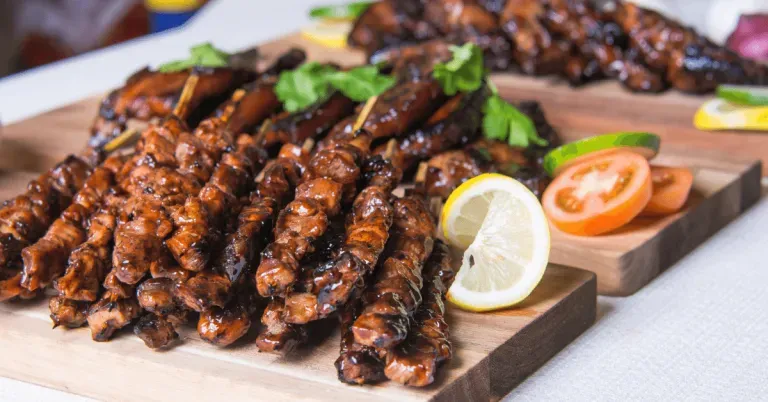
The streets of Malate, Poblacion, and Kapitolyo account for some of the country’s most eclectic culinary destinations. The array of street food and fancy dining is close to countless. But also, every single store, local and international, has its own identity. If there’s one thing that these places share more than any other ‘best places to eat in the Philippines’, it’s also the number of Filipino BBQ stalls and Korean BBQ restaurants here and there.
Korean BBQ, although said to be present in Manila since the 1960s, became all the rage in the last decade along with the growing Hallyu culture in the Philippines. Since then, Filipinos have popularised eating the dish and dining in restaurants that serve them during special occasions or gatherings. By now, the fact that it’s appetisingly good is beside the point. But rather, is it good enough to completely overshadow its local, more familiar counterpart? With factors like affordability, safety, and overall taste in mind, we’ll be looking closely at Korean BBQ and how it fares against Filipino BBQ.
Also read: The Dos and Don’ts of Eating At An Authentic Korean BBQ Restaurant
1. Price and accessibility
Filipino: On average, Filipino BBQ prices per stick range from ₱5 (the cost of chicken or pork intestines) to ₱25 (the cost of the usual marinated pork). As a typical Filipino snack and dish, BBQ is available in nearly every neighbourhood in the Philippines. Some BBQ stands even tend to be just a few metres from one another. It’s also easily found in eateries and authentic Filipino restaurants anywhere in the province or in key cities in the country. The more rural, oftentimes, the more authentic the taste will usually be.
Korean: Korean BBQ prices are often fixed at ₱500 for a buffet setup. A la carte, they can go as low as ₱200. The price already includes rice, side dishes, and comfortable, private seating in an air-conditioned establishment, which are more likely found in busier destinations than rural areas. A lot of the time, one would find Korean BBQ restaurants in Korean hotspots, such as Manila, Baguio, and Cebu. Unlike Filipino BBQ places, the more popular the city, the better it tends to taste due to the availability of resources.
Winner: Filipino
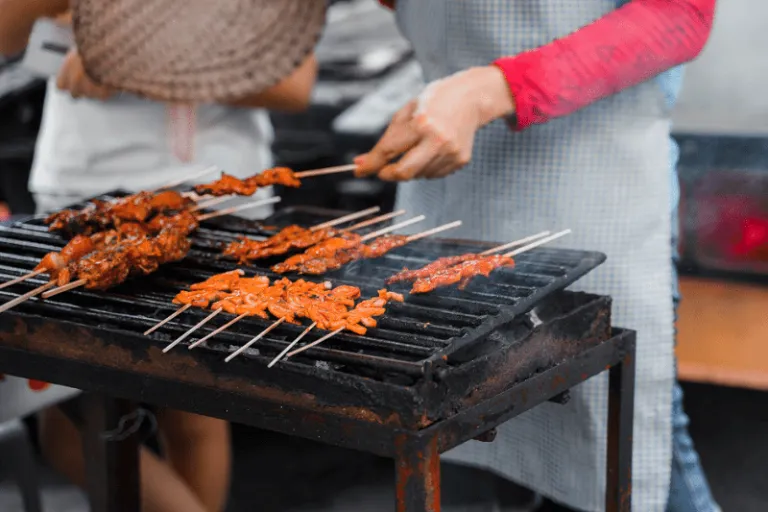
2. Convenience in preparation
Filipino: Cutting and marinating pork, which is the staple form of Filipino BBQ, takes about three hours to several hours overnight to marinate. Grilling takes as fast as 15 minutes. That seems like a lot of time, as most Filipinos usually just order them at their convenience. In reality, this is the standard way of giving the meat the best flavours possible. The upside is that once the meat is ready, there’s only the rice and sauce to think of. Everything’s all set once the preferred tenderness of the meat is achieved.
Korean: Like Filipino BBQ, preparations for Korean BBQ ideally start a day before the actual grilling and eating begin. During this period, the meat slices are soaked in a pre-made marinade and the sauces are concocted. Side dishes, or banchan, are bought and stored for the next day’s use. The setup starts from pre-arranging the grill, plates, banchan, and sauces. It ends with disassembling, as everything doesn’t stop until the last meat or dish is finished. On the other hand, eating at a Korean BBQ restaurant significantly cuts the time to as little as an hour. Some restaurants also offer the option of having a staff member do the cooking for you.
Winner: Filipino
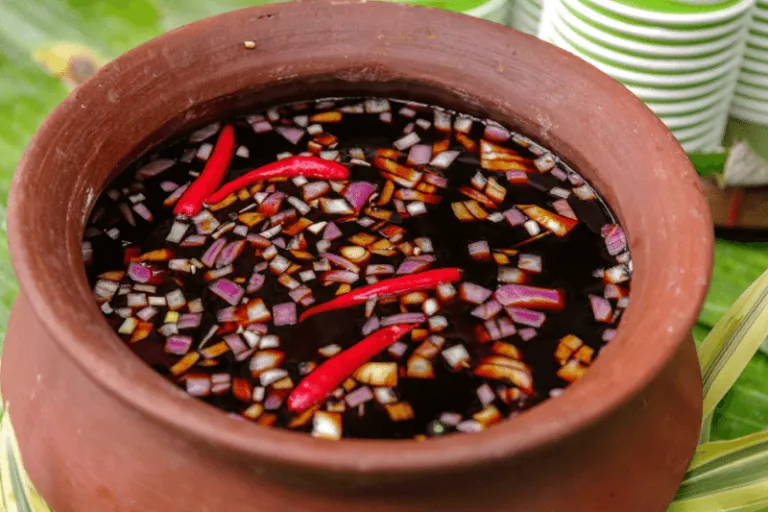
3. Serving inclusions
Filipino: A standard Filipino BBQ is best eaten on its own. Oftentimes, it’s just the meat and two to three sauce options: sweet, sour, or spicy. For bigger meals and gatherings, they may be served with bread or rice. Some, especially those used to Korean BBQ, may think of this as too plain, but it isn’t. Filipino BBQ, no matter the type of meat or part, is good enough as it is because of its sweet and savoury marinade. This is one of the many thrills of eating this staple Filipino food.
Korean: On the other hand, Korean BBQ comes with many variations of meat, sauces, and side dishes. Aside from pork and beef, some restaurants now offer vegan alternatives as well. For sauces, there’s savoury oil, chili, sweet and sour, cheese, and more depending on which Korean restaurant you go to or Korean shop you order from. For sides, there’s potatoes, eggs, rice, greens, coleslaw, noodles, kimchi, fish cakes, and so much more. While Filipino BBQ sauces and side dishes are optional, with Korean BBQ, everything is as important as the meat itself. In other words, there’s never a dull moment when opting for this Korean method of grilling.
Winner: Korean

4. Presentation
Filipino: It depends on where you eat it. For Filipino BBQ sold on the streets, there’s not much to expect when it comes to presentation. They could be piled under a glass counter, inside a chafing dish, or on a large banana tree leaf. As long as customers can see them, they’re good to go. If you’re lucky, those offered in big restaurants will come in a saucer along with a separately plated dipping sauce. They may or may not come with a garnish. Eating at home, on the other hand, offers flexibility where Filipinos can enjoy them in a boodle, campfire, or even alone.
Korean: Presentation is key to eating Korean BBQ. Each type of dish, from meat to vegetables, often has a designated container where diners can easily find and get them at their convenience. One can also see how the colours marry with one another, and it’s usually a pretty satisfying sight. Upon eating, some unwritten rules have to be followed. Among them are who gets to grill and how much banchan you should have per serving. When not observed, it can get pretty chaotic. Otherwise, it’s a perfect bonding experience for families and friends when everyone gets to bond over the course of eating Korean BBQ.
Winner: Korean
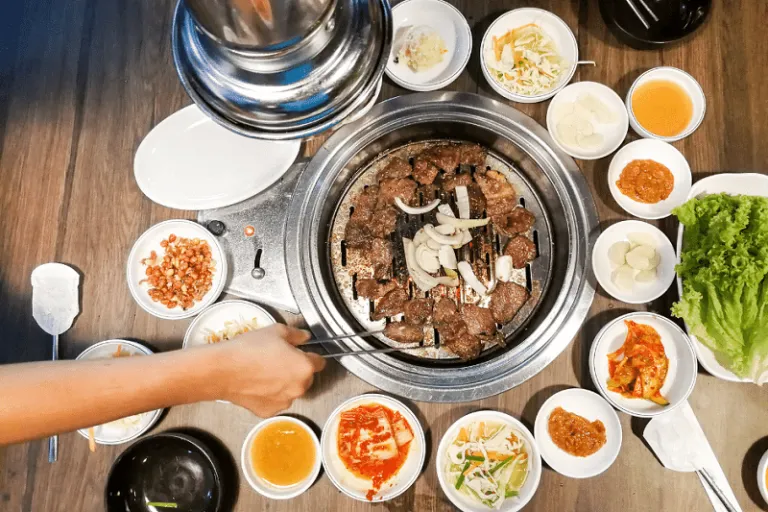
5. Safety and hygiene
Filipino: The stereotypical way to eat Filipino BBQ is on the streets. It’s how a lot of Filipinos grew up eating it and the experience only gets more nostalgic as the years go by. However, the fact that these skewered dishes are often exposed to open air puts the safety in eating them in question. Not to mention, customers have little knowledge as to how Filipino BBQ is prepared, from selecting the meat and other ingredients to cleaning the grilling equipment.
Korean: In contrast, Korean BBQ is often enjoyed indoors, with all the ingredients and materials undergoing thorough inspection and safety procedures. As a customer, one has control over cooking; and when done at home, the preparations involved, thereby ensuring safety and hygiene at all times. However, diners who tend to forget to change the grill regularly and over- or undercook the ingredients could face some unflattering consequences. But with proper care, these are certainly avoidable. While Korean BBQ restaurants are exhaust pipe-equipped, the lack of natural ventilation poses serious health threats.
Winner: Korean

6. Taste and consistency
Filipino: Filipino BBQ doesn’t rely a lot on post-grill seasoning as much as it does on efficiently marinating the ingredients. Involving soy sauce, ketchup, vinegar (also lemon or calamansi), garlic, and brown sugar, Filipino BBQ marinade is responsible for the unmistakable sweet taste locals have associated this street food with. Not even coating it with sauces can conceal such a flavour. That being said, the taste of Filipino BBQ doesn’t really change, so eating a lot of it in one sitting tends not to be as enjoyable as having just a few skewers at a time.
Korean: On the other hand, Korean BBQ is all about variety. Diners can choose from different cuts with varied flavours, whether it’s natural (plain pork belly or what’s universally known as samgyeopsal), pork chop, beef short ribs, beef tenderloin, and even boneless chicken. Of course, there’s a whole lot more depending on the store you choose. On top of the meat, again, there are sauces and side dishes that enhance one’s Korean BBQ dining experience. With each meal, diners have the option of making their serving as different or similar as the next one as much as they want!
Winner: Korean
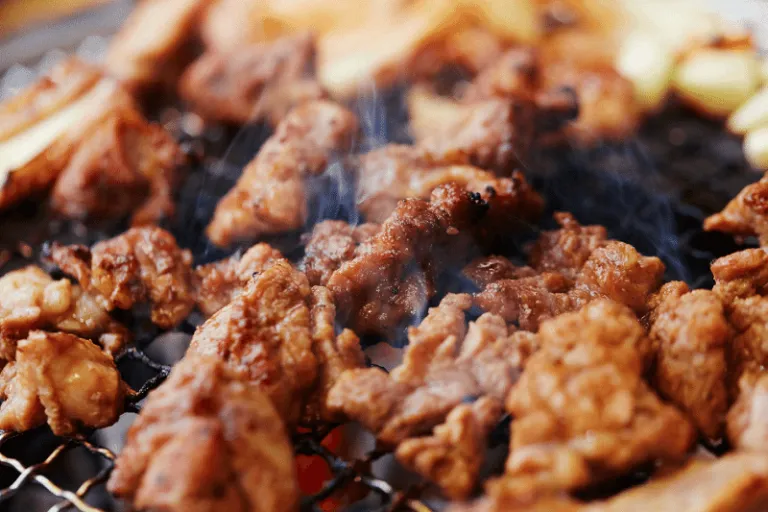
Also read: 8 Easy Korean Recipes for Your Next K-Drama Night
The verdict on Filipino versus Korean BBQ
Although Filipino BBQ takes the advantage of being more affordable, accessible, and simpler to prepare or eat, Korean BBQ beats it in all the other criteria, but only by a hair. Korean BBQ is generally known for being more inclusive. This goes for the condiments, side dishes, and the types of meat or main course it uses. It also has the better overall presentation, safety components, and taste which are mainly rooted in Korea’s more intricate and extravagant dining culture.
At the same time, it would be good to note that most of the above-mentioned criteria are highly subjective, as well as dependent on what’s considered the norm for a certain market of customers. Furthermore, for standardising purposes, other types of Filipino BBQ, such as chicken inasal and seafood, that are at times reliant on location, were set aside. Regardless of it all, both Filipino and Korean BBQ in the Philippines have their edge and are surely worth a try!
Featured image credit: Richard Ernest Yap via Canva Pro
Published at
About Author
Joser Ferreras
Subscribe our Newsletter
Get our weekly tips and travel news!
Recommended Articles
10 Bantayan Island Resorts, Hotels, and Rentals for Your Tropical Escape 10 Best Banawe Restaurants for a Mouthwatering Food Trip in QC The promise of new flavours beckons from Banawe.
10 Best Mountain Cafes in the Philippines for Your Peak Coffee Experience Coffee date on the mountains, anyone?
10 Instagrammable Laguna Restaurants and Cafes You’ll Love Elevate your Insta-game at these Laguna spots.
10 Pristine Beaches in Batangas for a Relaxing Tropical Break All within arm’s reach of Manila!
Latest Articles
Dingalan Travel Guide: Nature Spots to Discover Now Underrated coastal gem in Aurora
What to Eat in Bicol: Iconic Dishes and Treats, and Unique Pasalubong You’ll Love Spice up your foodie adventure with iconic Bicol dishes and must-try pasalubong!
Top Travel Trends in the Philippines for 2025 New spots, tips, and trends
New UK Adventure Park to Visit in Devon and Cornwall Fun countryside escape near London
Ultimate Camarines Norte Travel Guide: Waterfalls, Beaches, and More From surfing to secret waterfalls, Camarines Norte is your next escape!

